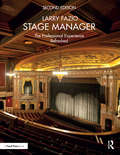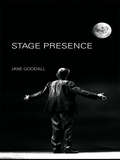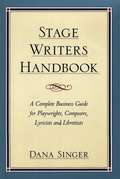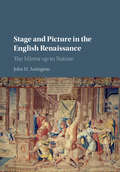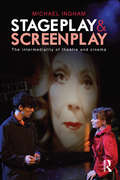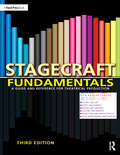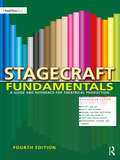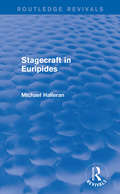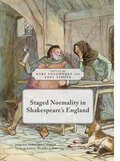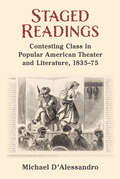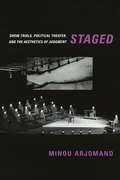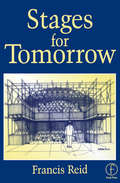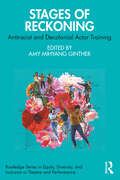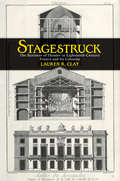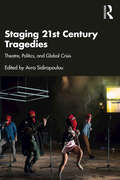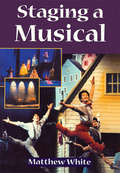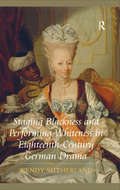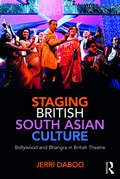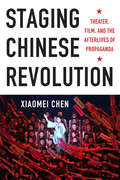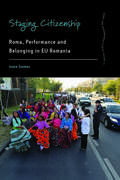- Table View
- List View
Stage Manager: The Professional Experience—Refreshed
by Larry FazioStage Manager: The Professional Experience–Refreshed takes the reader on a journey through all aspects of the craft of stage management in theatre, including the technological advancements that have come to theatre and the stage manger’s job. Chapters are laid out to reflect the order in which stage managers experience and perform their work: what makes a good stage manager, seeking the job, building a resume, interviewing for the job, and getting the job (or not getting the job). Included are chapters on the chain of command, working relationships, tool and supplies, creating charts, plots, plans and lists, the rehearsal period, creating the prompt book, calling cues, and the run of the show. These are just some of the many topics covered in this book. In addition, the author uses interviews with stage management professionals in various stages of production, providing another view of how the stage manager is perceived and what is expected form the work of the stage manager. Fifteen years after the original publication of Stage Manager: The Professional Experience, this new and refreshed edition is now in color to help clarify and illustrate points in the text. It is fully updated to reflect the the world of computerized technology: smart phones, thinly designed laptops, tablets, use of email and text messaging, storing and sharing files and information in cloud-based apps. Then there are the innovations of automation–electronically moving scenery, scenic projections–casting images and patterns on the stage; moving lights; LED luminaires; lasers; and greater use of fog and haze machines. In addition, the extensive glossary of more than 600 terms and phrases had been extend to well over 700, providing and excellent professional vocabulary for anyone hoping to be a theatre stage manager or already working in the field.
Stage Presence
by Jane GoodallFocusing on examples of live performance in drama, dance, opera and light entertainment, Jane Goodall explores a characteristic as compelling and enigmatic as the performers who demonstrate it. The mysterious quality of ‘presence’ in a performer has strong resonances with the uncanny. It is associated with primal, animal qualities in human individuals, but also has connotations of divinity and the supernatural, relating to figures of evil as well as heroism. Stage Presence traces these themes through theatrical history. This fascinating study also explores the blend of science and spirituality that accompanies the appreciation of human power. Performers display a magnetism of their audiences; they electrify them, exhibit mesmeric command, and develop chemistry in their communication. Case studies include: Josephine Baker, Sarah Bernhardt, Thomas Betterton, David Bowie, Maria Callas, Bob Dylan, David Garrick, Barry Humphries, Henry Irving, Vaslav Nijinsky and Paul Robeson.
Stage Writers Handbook
by Dana SingerDana Singer, Associate Director of America's foremost playwrights' association, the Dramatists Guild, gathers all the information and ideas stage writers need to conduct their careers in a businesslike manner, with all the protections the law provides. Includes chapters devoted to copyright, self-promotion, representation, production contracts, publishing and licensing agreements, underlying rights and collaboration.
Stage and Picture in the English Renaissance: The Mirror up to Nature
by John H. AstingtonThis book presents a new approach to the relationship between traditional pictorial arts and the theatre in Renaissance England. Demonstrating the range of visual culture in evidence from the mid-sixteenth to mid-seventeenth century, from the grandeur of court murals to the cheap amusement of woodcut prints, John H. Astington shows how English drama drew heavily on this imagery to stimulate the imagination of the audience. He analyses the intersection of the theatrical and the visual through such topics as Shakespeare's Roman plays and the contemporary interest in Roman architecture and sculpture; the central myth of Troy and its widely recognised iconography; scriptural drama and biblical illustration; and the emblem of the theatre itself. The book demonstrates how the art that surrounded Shakespeare and his contemporaries had a profound influence on the ways in which theatre was produced and received.
Stage-Play and Screen-Play: The intermediality of theatre and cinema
by Michael InghamDialogue between film and theatre studies is frequently hampered by the lack of a shared vocabulary. Stage-Play and Screen-Play sets out to remedy this, mapping out an intermedial space in which both film and theatre might be examined. Each chapter’s evaluation of the processes and products of stage-to-screen and screen-to-stage transfer is grounded in relevant, applied contexts. Michael Ingham draws upon the growing field of adaptation studies to present case studies ranging from Martin McDonagh’s The Cripple of Inishmaan and RSC Live’s simulcast of Richard II to F.W. Murnau’s silent Tartüff, Peter Bogdanovich’s film adaptation of Michael Frayn’s Noises Off, and Akiro Kurosawa’s Ran, highlighting the multiple interfaces between media. Offering a fresh insight into the ways in which film and theatre communicate dramatic performances, this volume is a must-read for students and scholars of stage and screen.
Stagecraft Fundamentals
by Rita Kogler CarverStagecraft Fundamentals Second Edition tackles every aspect of theatre production with Emmy Award-winning author Rita Kogler Carver's signature witty and engaging voice. The history of stagecraft, safety precautions, lighting, costumes, scenery, career planning tips, and more are discussed, illustrated by beautiful color examples that display step-by-step procedures and the finished product. This second edition offers even more in-demand information on stage management, drawing and drafting (both by hand and CAD), lighting fixtures, and special effects. Also new to this edition are current articles from Lighting and Sound America, brand new diagrams that illustrate hard-to-grasp concepts, and a plethora of information on European conversions, standards, and practices, making the skills you learn applicable to stage jobs on either side of the ocean! The accompanying website, www.stagecraftfundamentals.com is bursting with additional material such as an instructor's manual, exercises and study questions that coincide with chapters from the book, CAD drawings, color theory, manufacturing information, and so much more to help you along the way as you learn all about the world of theatre production! Praise for the Book:Beautifully written! The author has succeeded in relaying technical theatre information without being too technical and putting the reader to sleep. I read three sentences and instantly knew this book was for me and the way I teach. When I think back on the insufferable intro to tech theatre books I had to read, I feel cheated I didn't have this one as a student. I will be using this text in my class! -- Rob Napoli, Designer and Technical Director at Penn State University, Berks Campus This text has temped me to return to teaching with a textbook for the first time in seven years. The language is both accessible and informal yet the text goes a long way in debunking some of the typical jargon that may alienate students just getting into the field, or trying it out for the first time. The illustrations (the text is full of them) coupled with the stories reinforce the fundamental information being conveyed. -- John Paul Devlin, Associate Professor of Theatre at Saint Michael's College What a great idea! Thank heavens someone is doing this for students at that impressionable age. That has been one of my mantras - education of teachers and students on the use of scenic materials. The teachers don't have enough time in college to learn and do everything they have to teach. Most get thrown into the theatre area by default and struggle with designing/building/painting the scenery. -- Jenny Knott, Rosco Stagecraft Fundamentals is beautifully illustrated throughout, and the pofusion of color on every page gives this textbook the appearance of a coffee table book. The writing is clear and personal, which should be very appealing to students. Rita Carver covers all aspects of theatre production from scenery, to lighting, to an actor's makeup. Her close ties to the New York theatre scene gives this book a special insight into the professional world, one that goes well beyond what is found in most college textbooks. -- John Holloway, Professor in the Theatre Department at the University of Kentucky and President of the International Association of Theatrical stage Employees (IATSE) Local 346. I can't thank you enough for Stagecraft Fundamentals. I have been teaching stagecraft since 1976 and you have saved me from the nightmare of writing a text to suit my class needs..After two semesters with your text, I have found that I had more time to develop the skills necessary within the classroom than before. The humor that you have infused in the book has enticed my students to read on. That alone makes this text invaluable.--Meta Lasch, Assistant Professor, West Liberty University
Stagecraft Fundamentals: A Guide and Reference for Theatrical Production
by Rita Kogler CarverStagecraft Fundamentals tackles every aspect of basic theatre production with Rita Kogler Carver’s signature wit and engaging voice. The history of stagecraft, safety precautions, lighting, costumes, scenery, career planning tips, and more are discussed, illustrated by beautiful color examples that both display step-by-step procedures and break with the traditionally boring black and white introductory theatre book. This third edition improves upon the last, featuring three new chapters on design for props, projection, and touring. Also included are new end-of-chapter questions and an expanded discussion on LED lighting, stage automation, digital technology, stage management, makeup, theatre management, and sound design. This is the must have introductory theatre production book.
Stagecraft Fundamentals: A Guide and Reference for Theatrical Production
by Rita Kogler CarverStagecraft Fundamentals, Fourth Edition, is an entry-level how-to guide and reference on backstage theatre, covering every aspect of basic theatre production. The history of stagecraft, safety precautions, lighting, costumes, scenery, special effects, career planning tips, and more are discussed, illustrated by beautiful full-color images that display step-by-step procedures. This fourth edition improves upon the last, featuring a new chapter on Costume Crafts, which includes information on millinery, shoes, fabric dyeing, fabric modification, distressing, masks, armor, body padding, and accessories. Also included is an expanded discussion on sound, props, rigging, safety, production management, and projection design, new information on digital theatre, new end of chapter exercises, additional information on US/UK standards, and an emphasis on diversity and inclusion. Each chapter features exercises, discussion questions, and study words to help the teacher and student review the content before moving on to the next topic. Stagecraft Fundamentals, Fourth Edition, is the must-have introductory theatre production book for Stagecraft, Technical Theatre, and Theatre Production courses. A companion website (www.StagecraftFundamentals.com) features additional articles and information, downloadable images and paperwork, chapter quizzes, and an instructor’s manual.
Stagecraft Fundamentals: A Guide and Reference for Theatrical Production
by Rita Kogler CarverStagecraft Fundamentals, Fourth Edition, is an entry-level how-to guide and reference on backstage theatre, covering every aspect of basic theatre production.The history of stagecraft, safety precautions, lighting, costumes, scenery, special effects, career planning tips, and more are discussed, illustrated by beautiful full-color images that display step-by-step procedures. This fourth edition improves upon the last, featuring a new chapter on Costume Crafts, which includes information on millinery, shoes, fabric dyeing, fabric modification, distressing, masks, armor, body padding, and accessories. Also included is an expanded discussion on sound, props, rigging, safety, production management, and projection design, new information on digital theatre, new end of chapter exercises, additional information on US/UK standards, and an emphasis on diversity and inclusion. Each chapter features exercises, discussion questions, and study words to help the teacher and student review the content before moving on to the next topic.Stagecraft Fundamentals, Fourth Edition, is the must-have introductory theatre production book for Stagecraft, Technical Theatre, and Theatre Production courses.A companion website (www.StagecraftFundamentals.com) features additional articles and information, downloadable images and paperwork, chapter quizzes, and an instructor’s manual.
Stagecraft in Euripides (Routledge Revivals)
by Michael HalleranIn Stagecraft in Euripides, first published in 1985, Professor Michael Halleran examines certain aspects of the dramaturgy of the most extensively preserved Attic tragedian. Although the ancient dramatic texts do not contain performance directions, they do imply stage actions. This work explores the ways Euripides utilises the latter to make a point: to underline some issue, to suggest a contrast, or to shift the focus of the drama. Specifically, Halleran investigates the rearrangement of characters on stage at the major structural junctures of the play: entrances and their announcements; preparation for and surprise in entrances; and dramatic connections between exits and entrances. Three plays from the same era – Herakles, Trojan Women and Ion – are discussed in greater detail to reveal the potential of this approach for illuminating Euripides’ ‘grammar of dramatic technique’. Stagecraft in Euripides will thus appeal to students of theatre and drama as well as classicists.
Staged Normality in Shakespeare's England (Palgrave Shakespeare Studies)
by Rory Loughnane Edel SempleThis book looks at the staging and performance of normality in early modern drama. Analysing conventions and rules, habitual practices, common things and objects, and mundane sights and experiences, this volume foregrounds a staged normality that has been heretofore unseen, ignored, or taken for granted. It draws together leading and emerging scholars of early modern theatre and culture to debate the meaning of normality in an early modern context and to discuss how it might transfer to the stage. In doing so, these original critical essays unsettle and challenge scholarly assumptions about how normality is represented in the performance space. The volume, which responds to studies of the everyday and the material turn in cultural history, as well as to broader philosophical engagements with the idea of normality and its opposites, brings to light the essential role that normality plays in the composition and performance of early modern drama.
Staged Readings: Contesting Class in Popular American Theater and Literature, 1835-75
by Michael D'AlessandroStaged Readings studies the social consequences of 19th-century America’s two most prevalent leisure forms: theater and popular literature. In the midst of watershed historical developments—including numerous waves of immigration, two financial Panics, increasing wealth disparities, and the Civil War—American theater and literature were developing at unprecedented rates. Playhouses became crowded with new spectators, best-selling novels flew off the shelves, and, all the while, distinct social classes began to emerge. While the middle and upper classes were espousing conservative literary tastes and attending family matinees and operas, laborers were reading dime novels and watching downtown spectacle melodramas like Nymphs of the Red Sea and The Pirate’s Signal or, The Bridge of Death!!! As audiences traveled from the reading parlor to the playhouse (and back again), they accumulated a vital sense of social place in the new nation. In other words, culture made class in 19th-century America. Based in the historical archive, Staged Readings presents a panoramic display of mid-century leisure and entertainment. It examines best-selling novels, such as Harriet Beecher Stowe’s Uncle Tom’s Cabin and George Lippard’s The Quaker City. But it also analyzes a series of sensational melodramas, parlor theatricals, doomsday speeches, tableaux vivant displays, curiosity museum exhibits, and fake volcano explosions. These oft-overlooked spectacles capitalized on consumers’ previous cultural encounters and directed their social identifications. The book will be particularly appealing to those interested in histories of popular theater, literature and reading, social class, and mass culture.
Staged to Sell (or Keep)
by Jean NayarClearly organized room-by-room, filled with photos of inspiring rooms, and brimming with expert tips, this book shows you how to recognize the strengths and weaknesses of you home and to bring out its best to improve its value.
Staged: Show Trials, Political Theater, and the Aesthetics of Judgment
by Minou ArjomandTheater requires artifice, justice demands truth. Are these demands as irreconcilable as the pejorative term “show trials” suggests? After the Second World War, canonical directors and playwrights sought to claim a new public role for theater by restaging the era’s great trials as shows. The Nuremberg trials, the Eichmann trial, and the Auschwitz trials were all performed multiple times, first in courts and then in theaters. Does justice require both courtrooms and stages?In Staged, Minou Arjomand draws on a rich archive of postwar German and American rehearsals and performances to reveal how theater can become a place for forms of storytelling and judgment that are inadmissible in a court of law but indispensable for public life. She unveils the affinities between dramatists like Bertolt Brecht, Erwin Piscator, and Peter Weiss and philosophers such as Hannah Arendt and Walter Benjamin, showing how they responded to the rise of fascism with a new politics of performance. Linking performance with theories of aesthetics, history, and politics, Arjomand argues that it is not subject matter that makes theater political but rather the act of judging a performance in the company of others. Staged weaves together theater history and political philosophy into a powerful and timely case for the importance of theaters as public institutions.
Stages for Tomorrow: Housing, funding and marketing live performances
by Francis ReidThroughout the twentieth century, live theatre has been challenged by a range of new media based on increasingly sophisticated technologies. In Stages for Tomorrow, Francis Reid, one of the world's best known and best loved lighting designers, gives a unique insight into some of the key developments of live performance technology this century and offers a view of where the future lies - a must for any theatre professional who takes their job seriously. Throughout the twentieth century, live theatre has been challenged by a range of new media based on increasingly sophisticated technologies - audio recording, film, radio, television, video recording - and it has survived them all. Now live performance faces an information technology explosion where the reality is claimed to be virtual. In Stages for Tomorrow, Francis Reid, one of the world's best known and best loved lighting designers, gives a unique insight into some of the key developments of live performance technology this century and offers a view of where the future lies - a must for any theatre professional who takes their job seriously. The book covers every aspect of staging a live performance: from its relationship with photographic and digital media, old and new, to factors affecting the architectural design of buildings which house performances of ephemeral arts. The technology of staging styles is covered, with ongoing engineering solutions for scenery, light and sound. The book also examines developments in costume design, marketing and training. Whether student or seasoned professional - this is a guide to the technical theatre that you won't want to be without - now, or in the future!
Stages of Reality
by Jeremy Maron André LoiselleA groundbreaking collection of original essays, Stages of Reality establishes a new paradigm for understanding the relationship between stage and screen media. This comprehensive volume explores the significance of theatricality within critical discourse about cinema and television.Stages of Reality connects the theory and practice of cinematic theatricality through conceptual analyses and close readings of films including The Matrix and There Will be Blood. Contributors illuminate how this mode of address disrupts expectations surrounding cinematic form and content, evaluating strategies such as ostentatious performances, formal stagings, fragmentary montages, and methods of dialogue delivery and movement. Detailing connections between cinematic artifice and topics such as politics, gender, and genre, Stages of Reality allows readers to develop a clear sense of the multiple purposes and uses of theatricality in film.
Stages of Reckoning: Antiracist and Decolonial Actor Training (Routledge Series in Equity, Diversity, and Inclusion in Theatre and Performance)
by Amy Mihyang GintherStages of Reckoning is a crucial conversation about how racialized bodies and power intersect within actor training spaces. This book provokes embodied and intellectual discomfort for the reader to take risks with their ideologies, identities, and practices and to make new pedagogical choices for students with racialized identities. Centering the voices of actor trainers of color to acknowledge their personal experience and professional pedagogy as theory, this volume illuminates actionable ideas for text work, casting, voice, consent practices, and movement while offering decolonial approaches to current Eurocentric methods. These offerings invite the reader to create spaces where students can bring more of themselves, their communities, and their stories into their training and as fodder for performance making that will lead to a more just world. This book is for people in high/secondary schools, higher education, and private training studios who wish to teach and direct actors of color in ways that more fully honor their multiple identities.
Stagestruck: The Business of Theater in Eighteenth-Century France and Its Colonies
by Lauren R. ClayStagestruck traces the making of a vibrant French theater industry between the reign of Louis XIV and the French Revolution. During this era more than eighty provincial and colonial cities celebrated the inauguration of their first public playhouses. These theaters emerged as the most prominent urban cultural institutions in prerevolutionary France, becoming key sites for the articulation and contestation of social, political, and racial relationships. Combining rich description with nuanced analysis based on extensive archival evidence, Lauren R. Clay illuminates the wide-ranging consequences of theater's spectacular growth for performers, spectators, and authorities in cities throughout France as well as in the empire's most important Atlantic colony, Saint-Domingue.Clay argues that outside Paris the expansion of theater came about through local initiative, civic engagement, and entrepreneurial investment, rather than through actions or policies undertaken by the royal government and its agents. Reconstructing the business of theatrical production, she brings to light the efforts of a wide array of investors, entrepreneurs, directors, and actors-including women and people of color-who seized the opportunities offered by commercial theater to become important agents of cultural change.Portraying a vital and increasingly consumer-oriented public sphere beyond the capital, Stagestruck overturns the long-held notion that cultural change flowed from Paris and the royal court to the provinces and colonies. This deeply researched book will appeal to historians of Europe and the Atlantic world, particularly those interested in the social and political impact of the consumer revolution and the forging of national and imperial cultural networks. In addition to theater and literary scholars, it will attract the attention of historians and sociologists who study business, labor history, and the emergence of the modern French state.
Staging 21st Century Tragedies: Theatre, Politics, and Global Crisis
by Avra SidiropoulouStaging 21st Century Tragedies: Theatre, Politics, and Global Crisis is an international collection of essays by leading academics, artists, writers, and curators examining ways in which the global tragedies of our century are being negotiated in current theatre practice. In exploring the tragic in the fields of history and theory of theatre, the book approaches crisis through an understanding of the existential and political aspect of the tragic condition. Using an interdisciplinary perspective, it showcases theatre texts and productions that enter the public sphere, manifesting notably participatory, immersive, and documentary modes of expression to form a theatre of modern tragedy. The coexistence of scholarly essays with manifesto-like provocations, interviews, original plays, and diaries by theatre artists provides a rich and multifocal lens that allows readers to approach twenty-first-century theatre through historical and critical study, text and performance analysis, and creative processes. Of special value is the global scope of the collection, embracing forms of crisis theatre in many geographically diverse regions of both the East and the West. Staging 21st Century Tragedies: Theatre, Politics, and Global Crisis will be of use and interest to academics and students of political theatre, applied theatre, theatre history, and theatre theory.
Staging A Musical: An Essential Guide (Stage And Costume Ser.)
by Matthew WhiteIn Staging a Musical, Matthew White describes all the elements involved in putting on a musical production, including: how to choose the right show, budgets and schedules, auditions, rehearsals, and performances.
Staging Age
by Valerie Barnes Lipscomb Leni MarshallThis text explores how performers offer conscious-and unconscious-portrayals of the spectrum of age to their audiences. It considers a variety of media, including theatre, film, dance, advertising, and television, and offers critical foundations for research and course design, sound pedagogical approaches, and analyses.
Staging Blackness and Performing Whiteness in Eighteenth-Century German Drama (Ashgate New Critical Thinking In Religion, Theology And Biblical Studies)
by Wendy SutherlandFocusing on eighteenth-century cultural productions, Wendy Sutherland examines how representations of race in philosophy, anthropology, aesthetics, drama, and court painting influenced the construction of a white bourgeois German self. Sutherland positions her work within the framework of the transatlantic slave trade, showing that slavery, colonialism, and the triangular trade between Europe, West Africa, and the Caribbean function as the global stage on which German bourgeois dramas by Friedrich Wilhelm Ziegler, Ernst Lorenz Rathlef, and Theodor Körner (and a novella by Heinrich von Kleist on which Körner's play was based) were performed against a backdrop of philosophical and anthropological influences. Plays had an important role in educating the rising bourgeois class in morality, Sutherland argues, with fathers and daughters offered as exemplary moral figures in contrast to the depraved aristocracy. At the same time, black female protagonists in nontraditional dramas represent the boundaries of physical beauty and marriage eligibility while also complicating ideas of moral beauty embodied in the concept of the beautiful soul. Her book offers convincing evidence that the eighteenth-century German stage grappled with the representation of blackness during the Age of Goethe, even though the German states were neither colonial powers nor direct participants in the slave trade.
Staging British South Asian Culture: Bollywood and Bhangra in British Theatre
by Jerri DabooStaging British South Asian Culture: Bollywood and Bhangra in British Theatre looks afresh at the popularity of forms and aesthetics from Bollywood films and bhangra music and dance on the British stage. From Andrew Lloyd Webber’s Bombay Dreams to the finals of Britain’s Got Talent, Jerri Daboo reconsiders the centrality of Bollywood and bhangra to theatre made for or about British South Asian communities. Addressing rarely discussed theatre companies such as Rifco, and phenomena such as the emergence of large- scale Bollywood revue performances, this volume goes some way towards remedying the lack of critical discourse around British South Asian theatre. A timely contribution to this growing field, Staging British South Asian Culture is essential reading for any scholar or student interested in exploring the highly contested questions of identity and representation for British South Asian communities.
Staging Chinese Revolution: Theater, Film, and the Afterlives of Propaganda
by Xiaomei ChenStaging Chinese Revolution surveys fifty years of theatrical propaganda performances in China, revealing a dynamic, commercial capacity in works often dismissed as artifacts of censorship. Spanning the 1960s through the 2010s, Xiaomei Chen reads films, plays, operas, and television shows from an interdisciplinary and comparative perspective, demonstrating how, in a socialist state with "capitalist characteristics," propaganda performance turns biographies, memoirs, and war stories into mainstream ideological commodities, legitimizing the state and its right to rule. Analyzing propaganda performance also brings contradictions and inconsistencies to light that throw common understandings about propaganda's purpose into question.Chen focuses on revisionist histories that stage the lives of the "founding fathers" of the Communist Party, such as Chen Duxiu, Mao Zedong, and Deng Xiaoping, and the engaging mix of elite and ordinary characters that animate official propaganda in the private and public sphere. Taking the form of "personal" memories and representing star and youth culture and cyberspace, contemporary Chinese propaganda appeals through multiple perspectives, complicating relations among self, subject, agent, state building, and national identity. Chen treats Chinese performance as an extended form of political theater confronting critical issues of commemoration, nostalgia, state rituals, and contested history. It is through these reenactments that three generations of revolutionary leaders loom in extraordinary ways over Chinese politics and culture.
Staging Citizenship: Roma, Performance and Belonging in EU Romania (Dance and Performance Studies #11)
by Ioana SzemanBased on over a decade of fieldwork conducted with urban Roma, Staging Citizenship offers a powerful new perspective on one of the European Union’s most marginal and disenfranchised communities. Focusing on “performance” broadly conceived, it follows members of a squatter’s settlement in Transylvania as they navigate precarious circumstances in a postsocialist state. Through accounts of music and dance performances, media representations, activism, and interactions with both non-governmental organizations and state agencies, author Ioana Szeman grounds broad themes of political economy, citizenship, resistance, and neoliberalism in her subjects’ remarkably varied lives and experiences.
